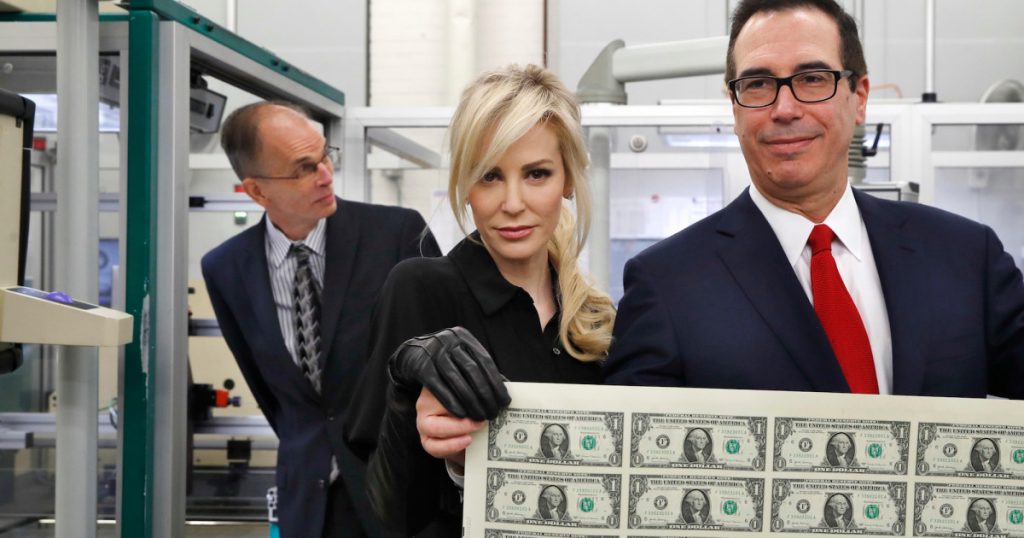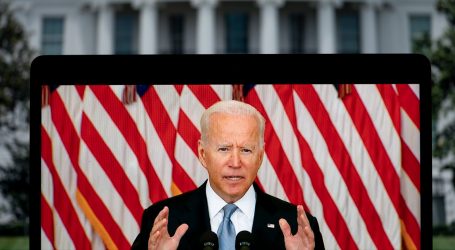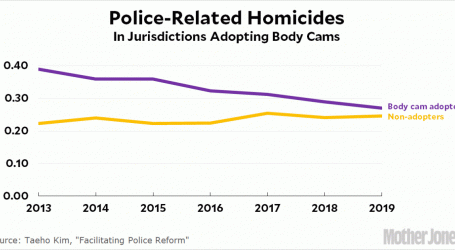Trump’s Treasury Department Uses Bogus Numbers to Sell Republican Tax Plan
Treasury Secretary Steven Mnuchin and his wife, Louise Linton, hold up a sheet of new $1 bills in November bearing his signature.Jacquelyn Martin/AP
Looking for news you can trust?Subscribe to our free newsletters.
Before the Senate passed its tax bill earlier this month, Treasury Secretary Steven Mnuchin insisted that a forthcoming Treasury Department analysis would show that the Republican tax plan pays for itself by boosting general economic growth. On Monday, the department found the Senate tax bill would pay for itself—but only if other parts of President Donald Trump’s agenda takes effect. The one-page analysis was quickly condemned as misleading, shoddy, and, ultimately, meaningless.
Economists like Jason Furman, who served as Barack Obama’s top economic adviser, called the document an “embarrassing joke.” Maya MacGuineas, the president of the nonpartisan Committee for a Responsible Federal Budget, said in a statement that the analysis makes a “mockery” of the “dynamic scoring” process used to analyze the economic effects of legislation. Scott Greenberg, a senior analyst at the conservative Tax Foundation, wrote on Twitter that the new numbers “don’t correspond to anything meaningful.”
The new Treasury report doesn’t actually analyze the bills passed by the House and Senate; instead, it is based on a growth forecast that was produced by the Trump administration months before the tax bills were released. That estimate, which was also panned by independent experts, projected that Trump’s agenda—not just tax cuts, but also policies like increased infrastructure spending—would boost growth by about 1.1 percent per year more than the nonpartisan Congressional Budget Office (CBO) projected. The Treasury Department is claiming that translates to $1.8 trillion in additional tax revenue over the next 10 years—roughly $300 billion more than Republicans’ $1.5 trillion tax cut.
Congress’ independent Joint Committee on Taxation, along with the nonpartisan Tax Policy Center, have found that the Senate tax bill would add at least $1 trillion of deficit spending over the next 10 years. A recent survey of top economists found that none believe the Republican tax plan would pay for itself.
Chad Stone, the chief economist at the left-leaning Center on Budget and Policy Priorities, says that a growth forecast would usually start by analyzing the impact of the tax cut itself. To make matters worse, Stone adds that the growth projections that the Treasury Department is working backwards from are seen as “incredibly optimistic.” In May, he wrote that it was “unprecedented” for an administration to use a growth estimate that diverged so greatly from that of the CBO.
In late November, the New York Times reported that the Treasury Department had not released its promised analysis of the tax bill because it did not exist. The department’s inspector general is now looking into the matter in response to a letter from Sen. Elizabeth Warren (D-Mass.). “Either the Treasury Department has used extensive taxpayer funds to conduct economic analyses that it refuses to release because those analyses would contradict the Treasury secretary’s claims, or Secretary Mnuchin has grossly misled the public about the extent of the Treasury Department’s analysis,” Warren’s letter said.
Bill Hoagland, a senior vice president at the Bipartisan Policy Center and a former Republican staff director on the Senate budget committee, told Bloomberg on Monday that it looked like the Treasury Department’s Office of Tax Policy has now been “pressed to validate somehow the secretary’s position that the tax bill would pay for itself.”
Back in February, Mnuchin said he had a team of more than 100 hundred people “working around the clock” to run the numbers on Republicans’ tax plans. Nearly ten months later, that overtime work has only produced one 407-word press release. Stone says the methodology and thoroughness of it “looks very different from the kind of analysis that Treasury staff have produced in the past.”





